Archive pictures reveal REAL American homes from the 1960s
How the swinging 60s happened at home
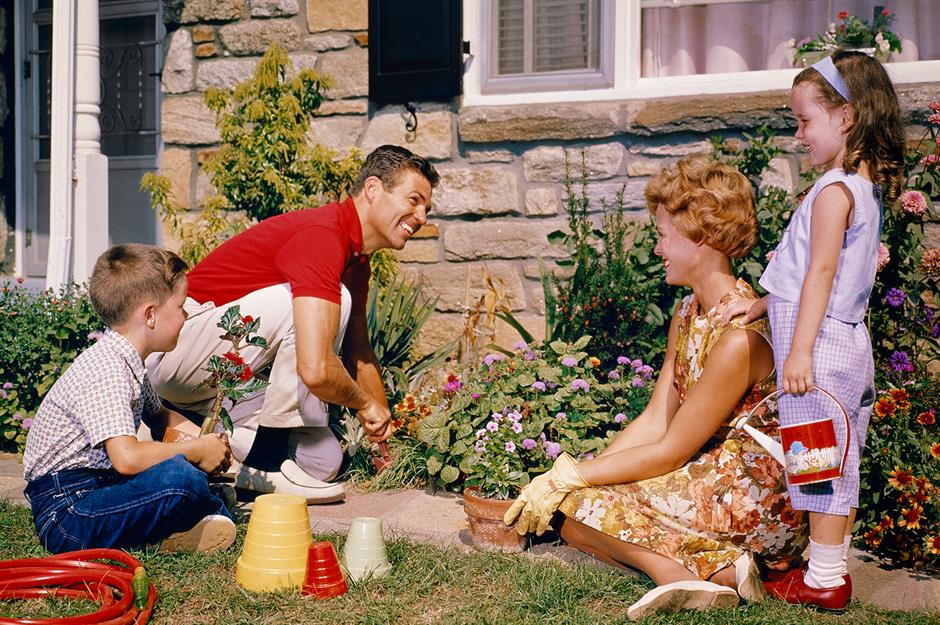
Hot on the heels of the 1950s revival of the cult of domesticity came the 1960s, an era of social reform, new ideas and new concepts of homemaking.
While the decade started with the Kennedys’ ‘Camelot’ and a push for wholesome family values, by its end, these ideals had been overtaken by the harsh realities of war, civil rights movements and radical counterculture.
Click or scroll to learn how Americans lived in the 1960s…
1960: social spaces come home
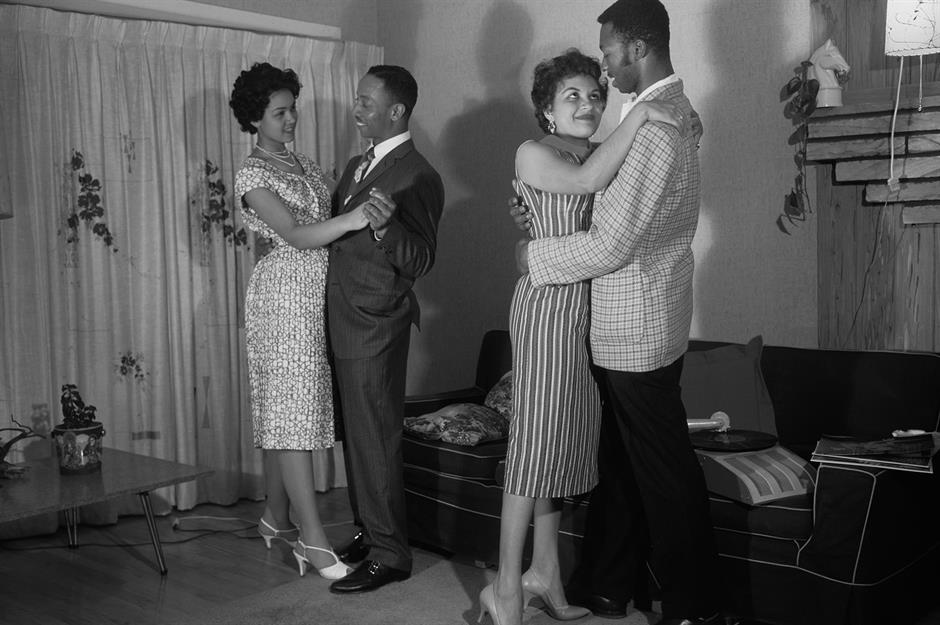
Following the example set by the 1950s, the 1960s elevated entertaining to an art form, and common spaces of the home needed to be redesigned to maximise their potential as places to host.
The living room, in particular, took centre stage during the 1960s as an entertaining venue for cocktail parties, game nights or even double dates, as we can see from this sweet snap from 1960.
1960: the perfect housewife
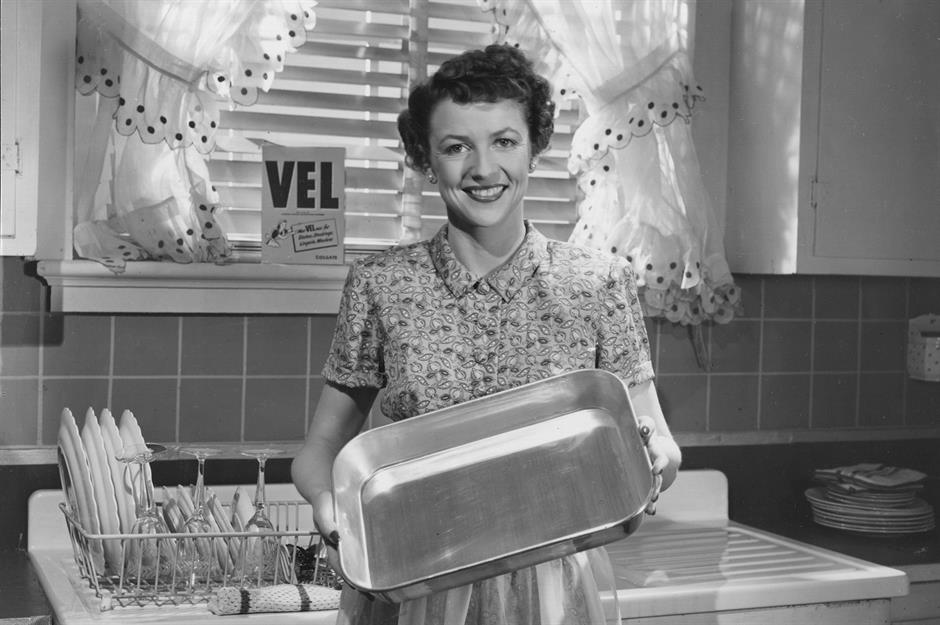
A hangover from the 50s was the idea of the perfect housewife, the woman who looked effortlessly chic and elegant as she cooked the family meals, did the family laundry and kept the house sparkling clean and well-ordered at all times.
Advertisements like the one for detergent pictured here flooded magazines and TV commercials, helping to perpetuate the myth of perfect, female-managed domesticity.
1960: colourful bedrooms
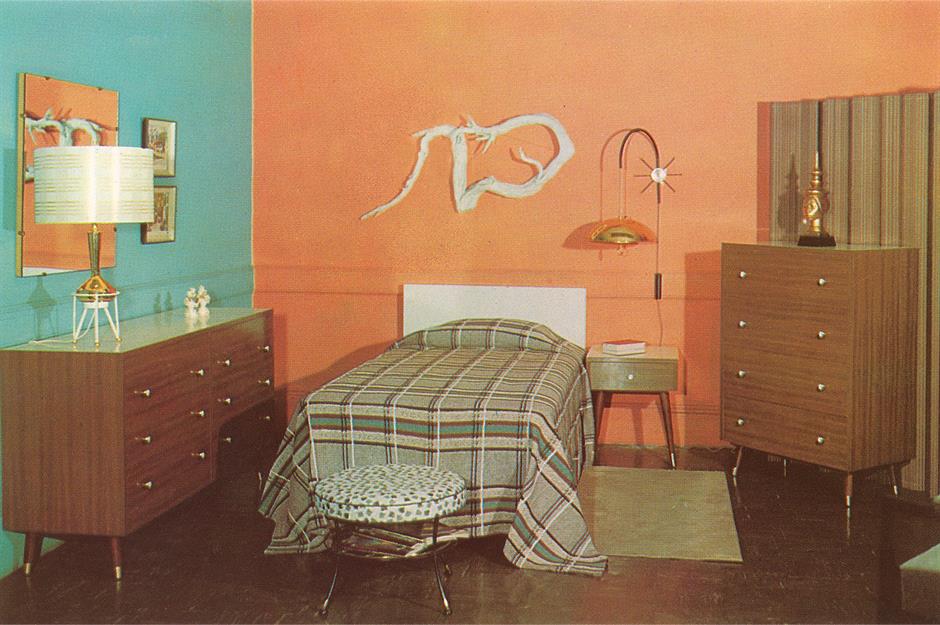
There’s a lot to absorb in this 1960s bedroom, from the garishly patterned bedspread to the contrasting block coloured walls. There's even statement artwork above the bed.
On display are some of the most prominent design trends of the period, including modular, teak wood furniture and a starburst accented lamp.
1960: bathroom decor
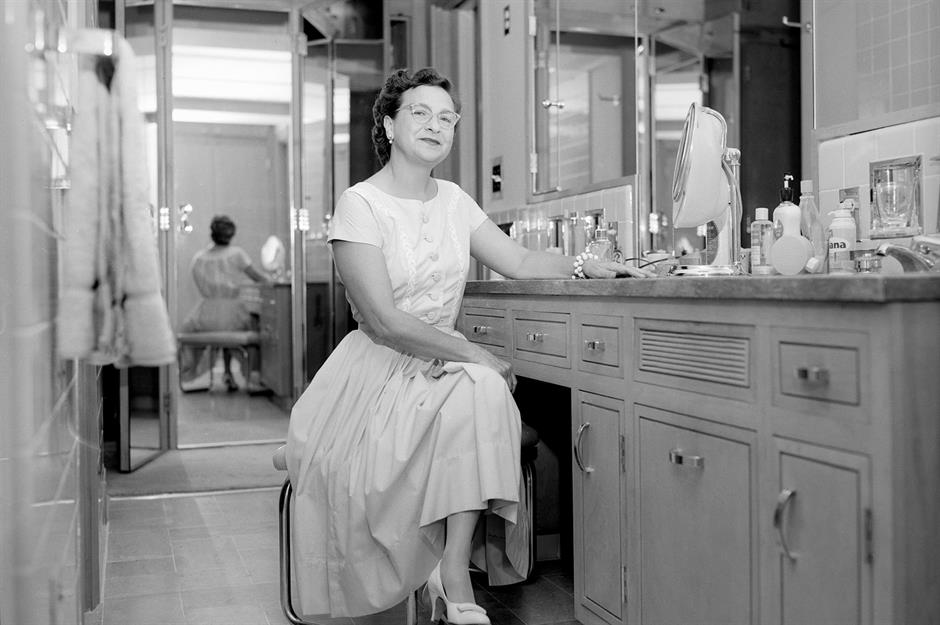
While it’s hard to tell from this black and white photo of a lady posing in front of her makeup mirror, most 1960s bathrooms were also a blaze of colour.
Tiles in garish shades of peach, teal or sky blue and fixtures in contrasting or complementary colours were the norm.
Many bathrooms also featured wallpaper, and plenty of cabinetry and storage space for those all-important beauty products.
1961: the new heart of the home
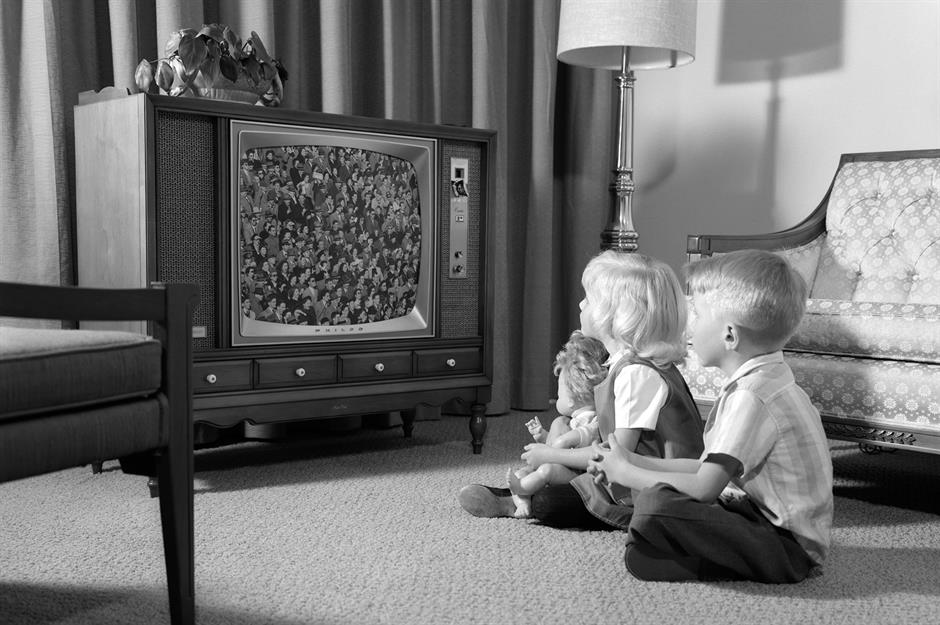
After pouring into American homes en masse in the 1950s, televisions or TVs were definitively the opiate of the masses in the 60s. They took pride of place in nearly every living room across the country.
Televisions helped shape public opinion and consumer culture and amplified some of the larger social issues that dominated the decade, such as the Civil Rights movement and the Vietnam War.
1962: the feminine mystique?
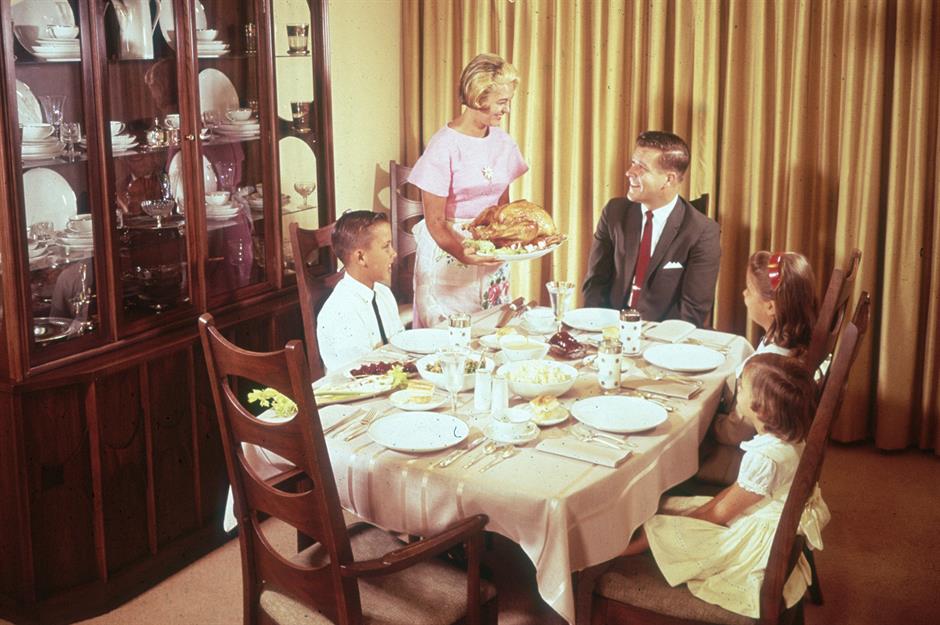
The issue of feminism was less highly televised but no less prevalent. The post-war push for women to return to the domestic sphere was still prevalent, and many women were still fulfilling the role of the traditional housewife in the early part of the decade, as seen in this picture from 1962.
However, with the passing of the Equal Pay Act, the release of the birth control pill and the publication of Betty Friedan’s feminist manifesto The Feminine Mystique, many women began to push back against the constraints of domesticity.
1963: rock and the radio
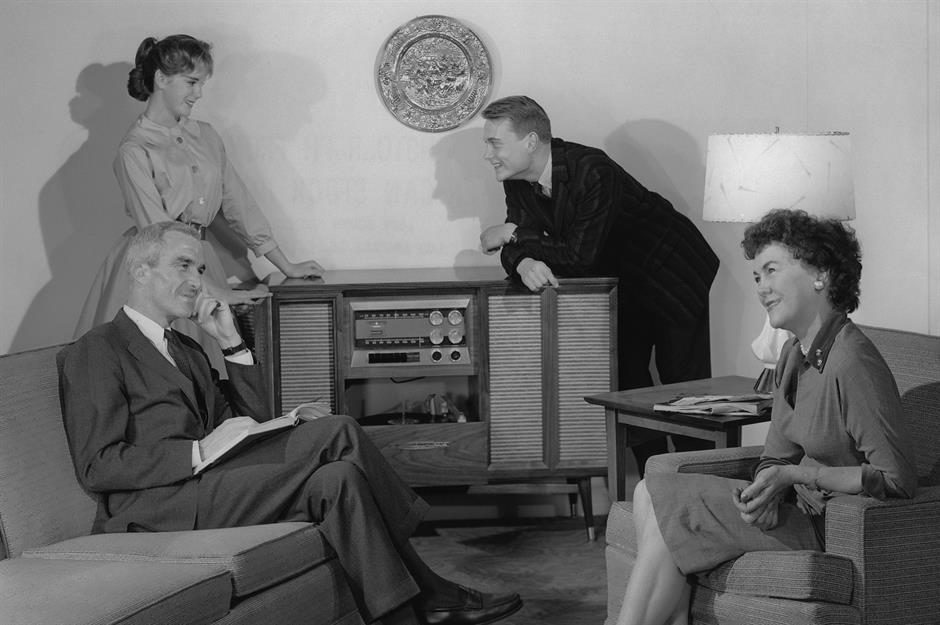
While television was the preferred method for media entertainment, radio remained popular in the 1960s, and most families kept a radio in the living room or kitchen along with the TV set. Here, a family gathers around to listen.
However, radio programming underwent a shift towards music, bringing popular Rock n’ Roll bands’ chart-topping hits into the home instead of scripted dramas and lengthy news stories.
1960: that 1960s 'look'
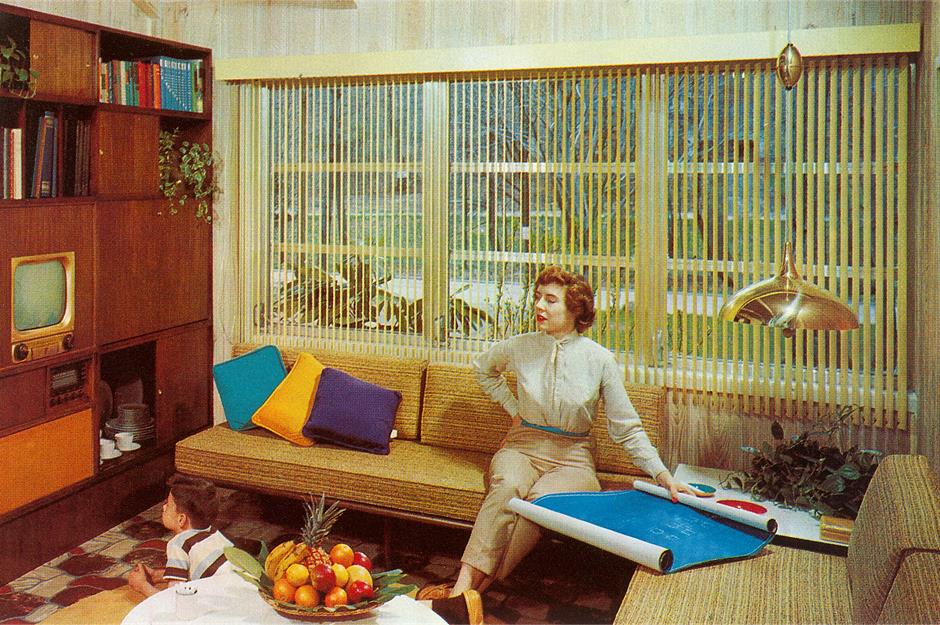
This image of living room in 1960 encapsulates what is recognised today as a very 1960s 'look.' The pastel or ice cream shades that had been popular in the 1950s gave way to more highly saturated hues such as bright blues, oranges, yellows and reds.
These colours coated walls, furnishings and carpets with no fear of clashing. The vivid shades were generally offset by wooden finishes, also very popular in the 60s, and included cabinets, open shelving and wall panelling.
1961: the kitchen of the 60s
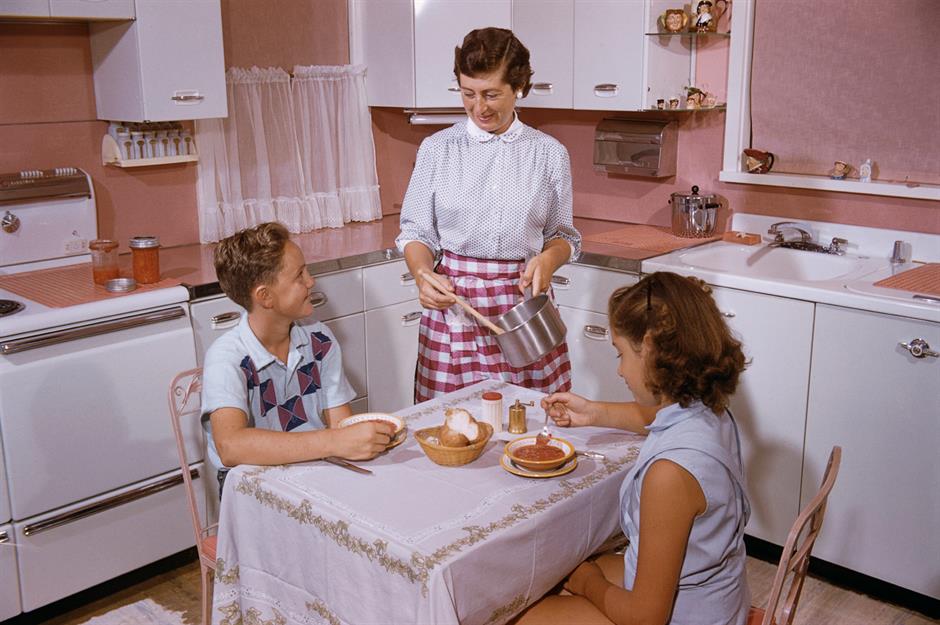
Infamous in cultural memory for avocado green appliances and mustard yellow floor tiles, 1960s kitchens were colourful spaces which often employed playful patterns as well as elegant touches like the lace curtain in this kitchen.
The kitchen was another popular location for polished wooden cabinetry, now often suspended from the ceiling as a sort of floating divider between the kitchen and dining areas.
1963: the allure of Camelot
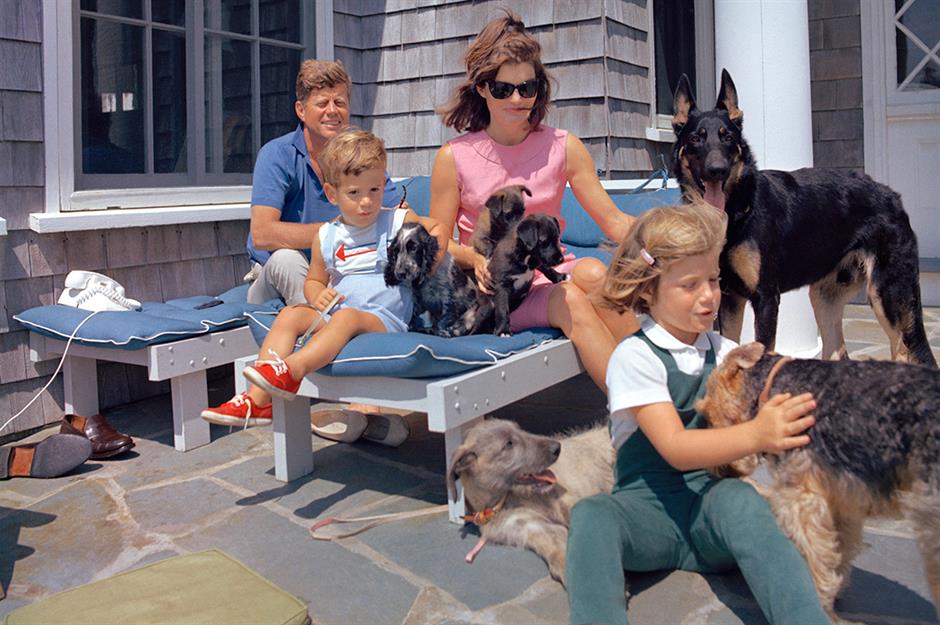
Elected in 1960, President John F. Kennedy ushered in what many Americans believed would be a new era of hope, equality and prosperity.
The charismatic, handsome president and his glamourous wife had moved their young family into the White House and onto the national stage in 1961, projecting an image of perfection that captured the nation’s hearts and was soon mass produced in popular culture as a return to 'Camelot.'
Everyone wanted to be like the fun and fashionable Kennedys, who dressed like catalogue covers and holidayed in elegant homes, like the Hyannisport mansion where the family is pictured.
1965: homeownership on the rise

Between 1950 and 1970, America’s suburban population hit 74 million, nearly double its previous number. 83% of all population growth occurred in suburban areas.
Homeownership was dramatically increasing too, driving cash flow into a range of industries as American’s splashed out not only on new construction, but furnishings, appliances and other home goods they might previously have saved for for years.
1965: 1960s architecture
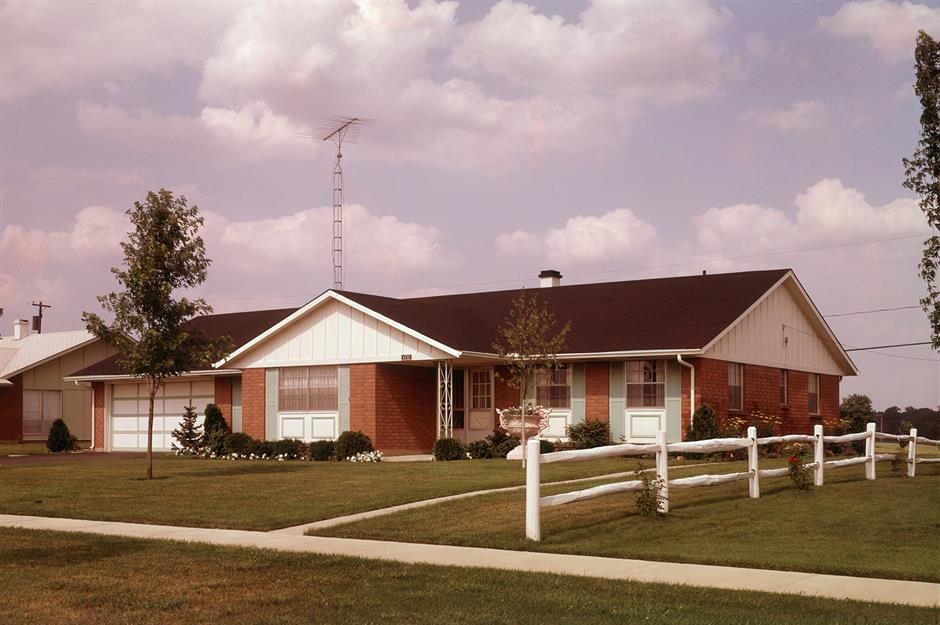
The style of all these new homes was distinctive. From wooden A-frames to split levels and even brick ranches like the one pictured here. Split-level homes are often considered the architectural calling card of the 1960s, and they had a family-friendly design
Bedrooms and bathrooms were on one level, separated by a short flight of steps from the main level, which would include the living room, dining room and kitchen.
1965: the (literal) rise of stilt houses
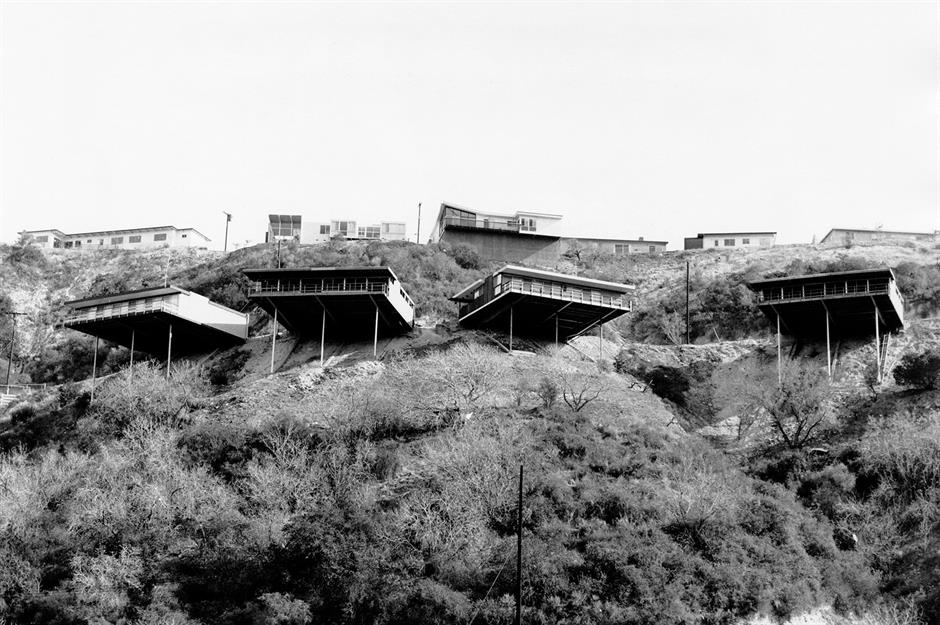
Another particularly distinctive architectural style from the era, stilt houses rose to prominence in the 1960s as a construction solution for building on hillsides.
These designs proved particularly popular in steeply sloped areas where flat building space was scarce, like Los Angeles. This picture, taken in 65, shows a collection of the homes designed by architect Richard J. Neutra.
The homes were deemed a bit of an eyesore, despite being a simple and inexpensive building hack.
1965: clean lines and conversation pits
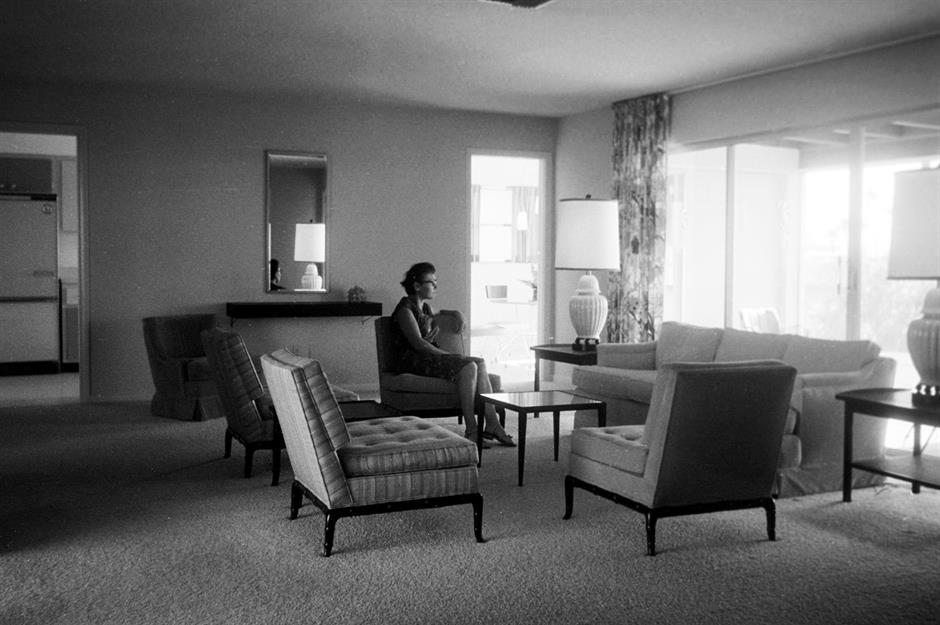
New architectural trends in interior design were most prominent in living rooms, which were still the primary gathering places in the 1960s.
These spaces now veered away from high ceilings, arched doorways and intricate moulding, opting instead for clean lines and smooth surfaces.
1965: flashy appliances
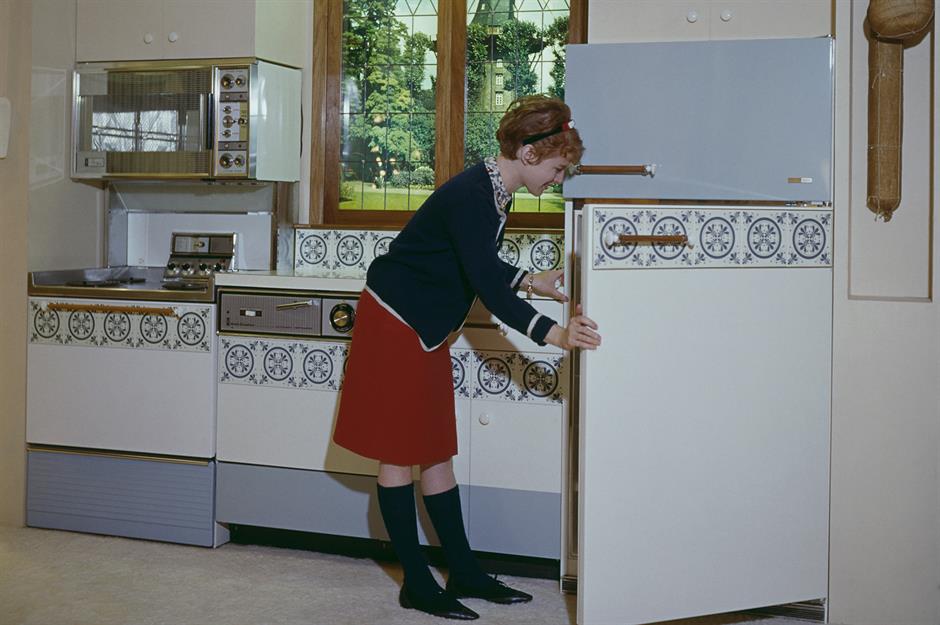
60s homes also saw the introduction of new materials and appliances. Solid, boldly coloured laminate countertops became popular, as did resilient flooring, another synthetic product which had become widely available.
Meanwhile, bold patterns including stars, triangles, chevrons and boomerangs were used to decorate walls and even appliances, like splashy set pictured here.
1965: 60s dining style
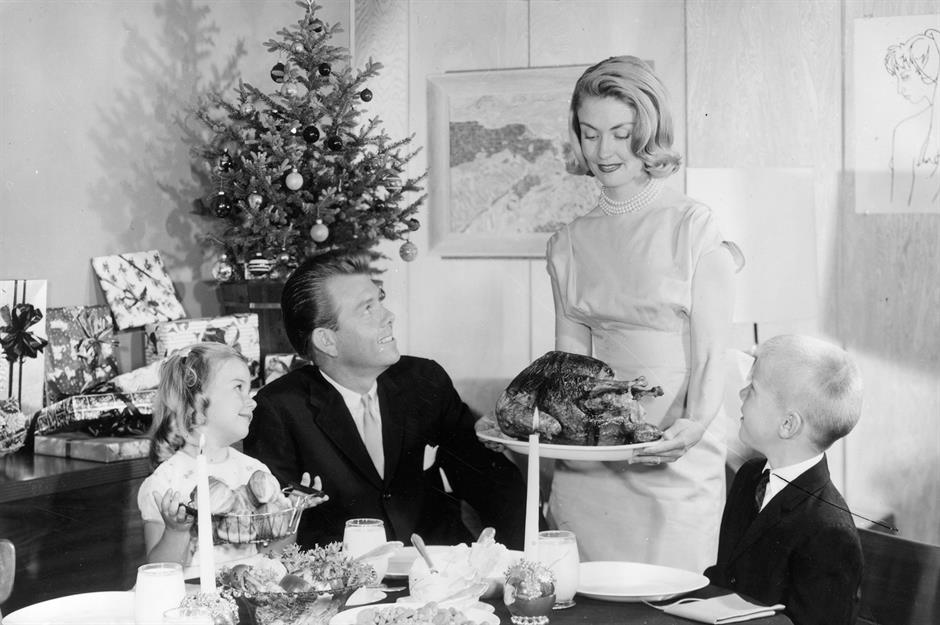
Dining rooms remained the family gathering place for end-of-day formal meals, which were often still prepared by the all-American housewife conceived in the 1950s.
However, furniture was becoming more modular and luxury materials were creeping in in the form of carpets and curtains. Wooden panelled walls, like those pictured here, were replacing painted and papered ones.
1966: suburbia in bloom
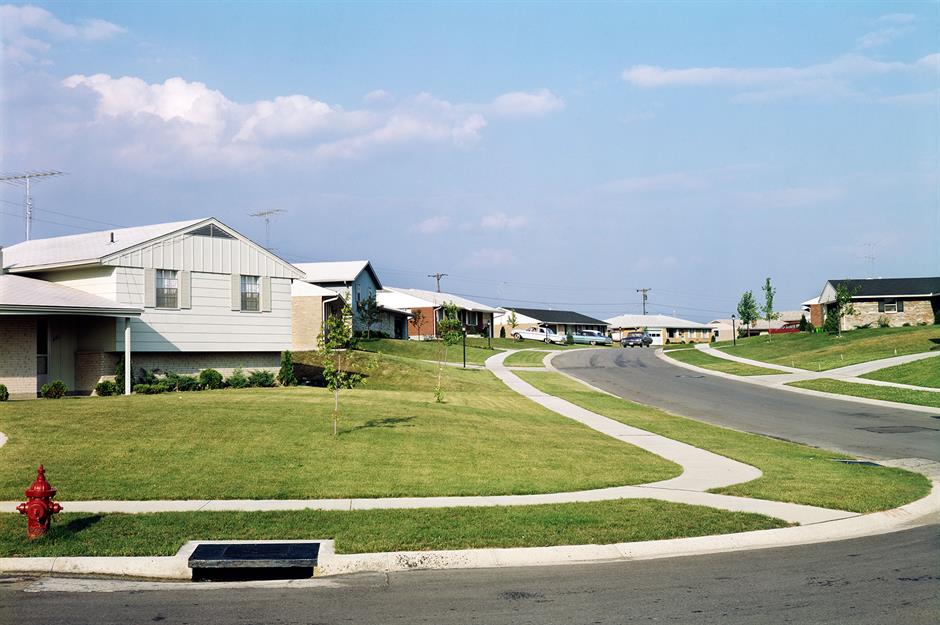
The 1960s saw a continuation of the suburban expansion that had begun in the 1950s, with almost as many Americans living in suburban areas as in urban ones by 1960.
These new neighbourhoods promised cleaner air and safer streets, while the construction of highways across the country in the wake of the Federal Highway Act of 1956 facilitated easy travel into city centres for work or entertainment.
1965: cars as a necessity
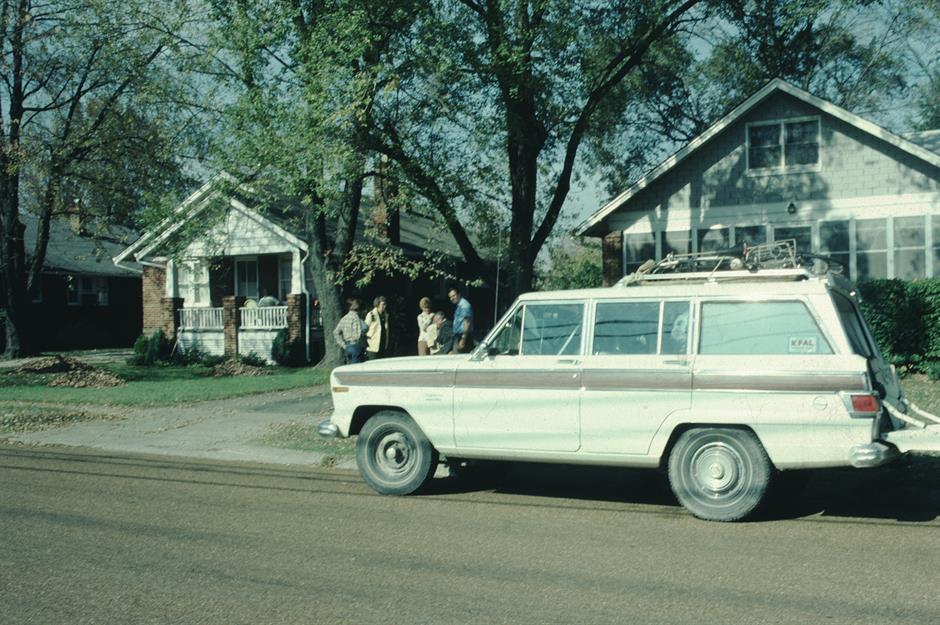
Car ownership was also steadily on the rise in the 60s. They had gone from being a luxury to a necessity for urban families, allowing them to travel easily without access to urban public transport.
Cars not only facilitated suburban sprawl, but they also led to the rise of the great American road trip, allowing families to take vacations with minimal travel expenses.
This 1965 snap shows the family car being packed for just such an occasion.
1965: segregation
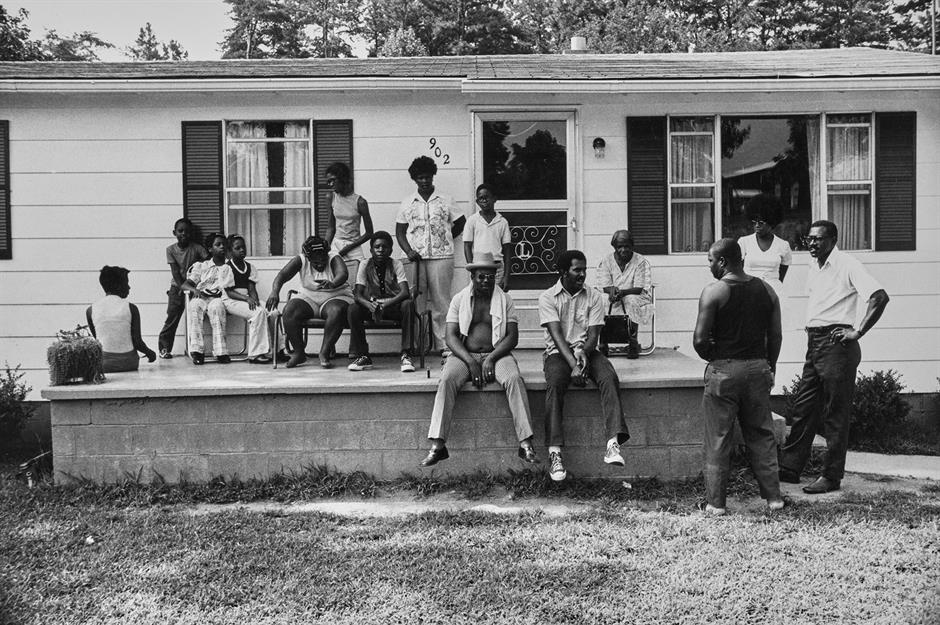
Segregation was highly prevalent in the 1960s, one of the primary injustices which led to the rise of the Civil Rights movement by the middle of the decade.
Even where not legally enforced, zoning laws, racist officials and inhospitable neighbours kept black families out of traditionally white neighbourhoods, forcing them into poorer and less well-served parts of town.
1966: domestic help
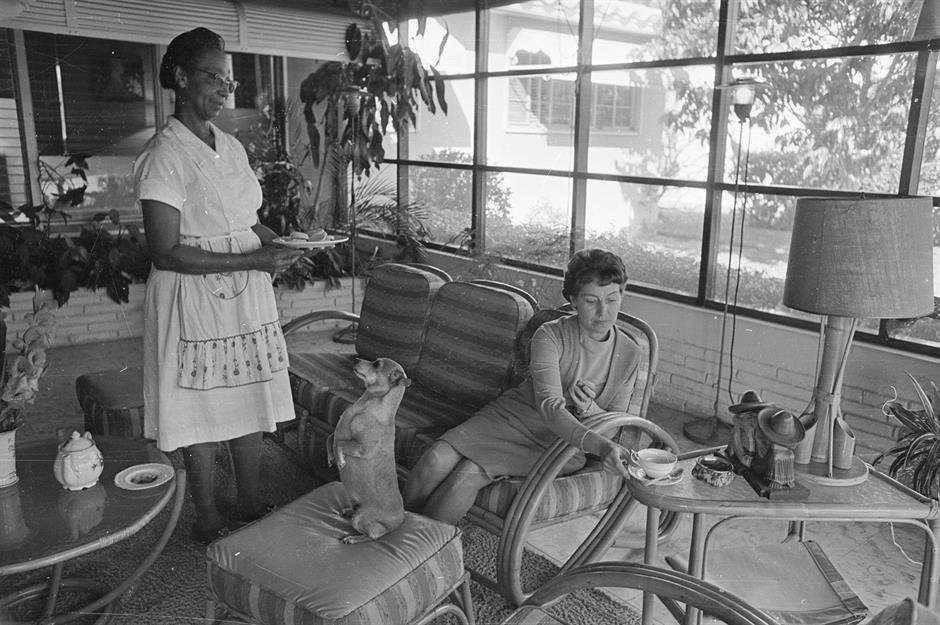
Many families still employed domestic help in the 1960s, a workforce which consisted of Black Americans working in White households, particularly in the southern states.
Domestic servitude, often referred to as 'the help', was one of the few employment options open to Southern Black Americans due to systemic racism, but forced them to work long, hard days for insufficient pay.
90% of Black working women in the mid-to-late 19th century were employed in domestic service.
1968: Lyndon B. Johnson's "Great Society"
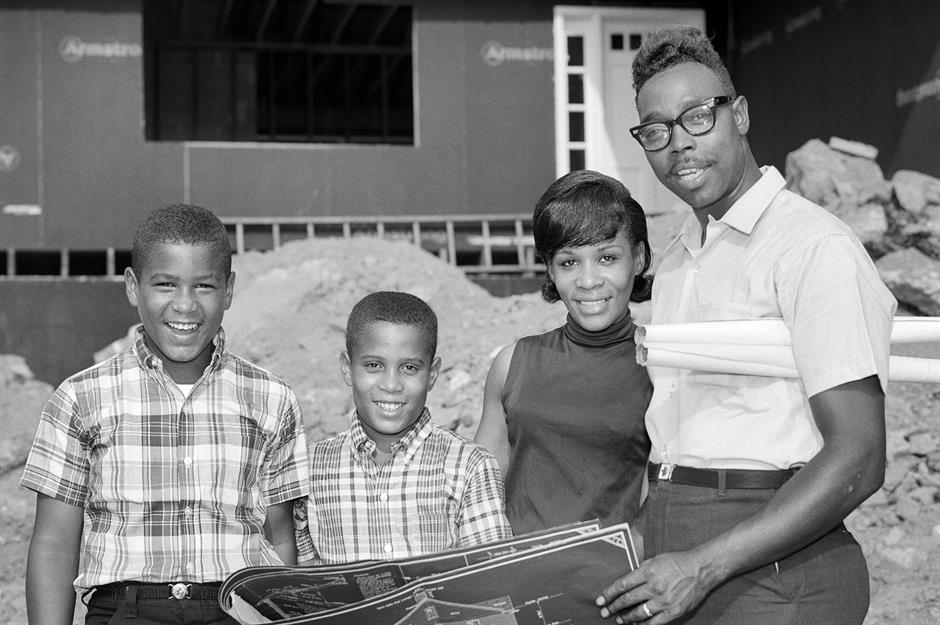
After Kennedy’s assassination, President Lyndon B. Johnson picked up where he left off, declaring in 1964 that he would make the US into a “Great Society,” irradicating poverty and racial injustice, which so often went hand in hand.
He introduced a range of programs to support disadvantaged and disenfranchised communities, as well as setting aside federal subsidies for urban redevelopment and community projects, which led to more affordable housing being built in formerly exclusive neighbourhoods.
Loved this? Now check out more incredible retro homes
Comments
Be the first to comment
Do you want to comment on this article? You need to be signed in for this feature